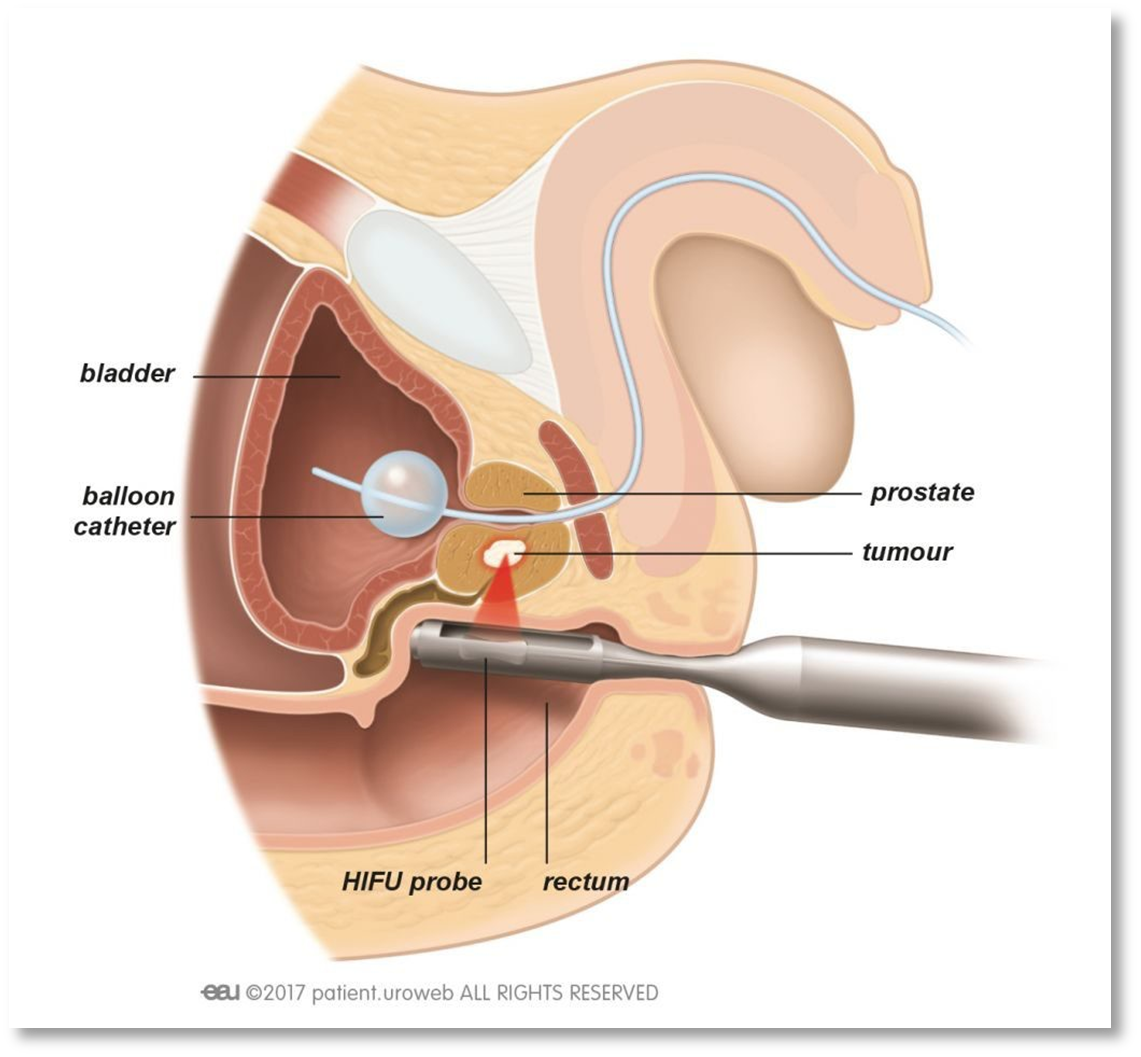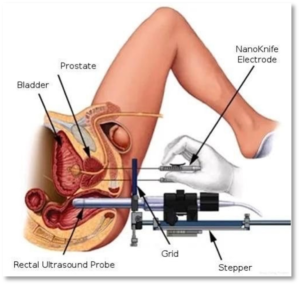
By: Dr. Damian Sorce (Urologist at Colorado Urology, ColoradoUro.com) and
Dr. Ajay Bhatnagar (Radiation Oncologist at Prostate Cancer Institute of America, Prostatecancerusa.com)
This comprehensive guide is tailored for urologists, prostate cancer patients, and radiation oncologists, providing an overview of focal therapies for localized prostate cancer. These treatments aim to target only the cancerous portion of the prostate, preserving healthy tissue and minimizing side e:ects.
High-Intensity Focused Ultrasound (HIFU)
HIFU is a non-invasive focal treatment that uses high-energy ultrasound waves to precisely destroy cancer tissue.
Ideal Candidates:
- Men with smaller prostates (<30ml)
- Focal prostate cancer patients
- Those seeking to avoid side e:ects like urinary incontinence or erectile dysfunction
Not Suitable For:
- Men with larger prostates
- Patients with di:use cancer
Procedure Details:
- Duration: Approximately 2 hours
- Recovery: Rapid, with catheter use for 6 days post-surgery
- Cost: $18,000-$20,000 if not covered by insurance
- Insurance: Covered by Medicare and some commercial plans
NanoKnife (Irreversible Electroporation – IRE)

NanoKnife uses short pulses of high-voltage electricity to create micropores in cancer cells, leading to their death.
Ideal Candidates:
- Patients with small to medium-sized prostates
- Those seeking to avoid traditional treatment side e:ects
Not Suitable For:
- Patients with large prostates (>80ml)
- Those with bilateral cancer
Procedure Details:
- Duration: Approximately 1 hour
- Recovery: Catheter use for about 6 days, no activity restrictions
- Cost: $18,000-$20,000 if not covered by insurance
- Insurance: Covered by straight Medicare, not Medicare Advantage or commercial plans
Low Dose Rate (LDR) Brachytherapy

Focal LDR Brachytherapy involves the permanent implantation of radioactive seeds in the cancerous portion of the prostate.
Ideal Candidates:
- Patients with low or intermediate-risk prostate cancer
- Prostates smaller than 80ml
- Suitable for salvage treatment after failed external beam radiation therapy
Not Suitable For:
- High-risk prostate cancer patients (unless combined with external beam radiation)
Procedure Details:
- Duration: Less than an hour
- Recovery: No catheter needed, some urination discomfort for a few weeks
- Insurance: Usually covered by insurance plans
Comparison of Focal Therapies
| Therapy | Procedure Time | Recovery | Insurance Coverage | Best For |
|
HIFU |
2 hours |
Fast, 6-day catheter | Medicare, some commercial | Smaller prostates, focal cancer |
|
NanoKnife |
1 hour |
Fast, 6-day catheter | Straight Medicare only | Small to medium prostates |
|
LDR Brachytherapy |
<1 hour |
No catheter, some discomfort |
Covered |
Low/intermediate risk |
These focal therapies o:er promising alternatives for prostate cancer treatment, potentially reducing side e:ects associated with traditional approaches. Patients should consult with their urologists and radiation oncologists to determine the most suitable option based on their specific condition and preferences.
